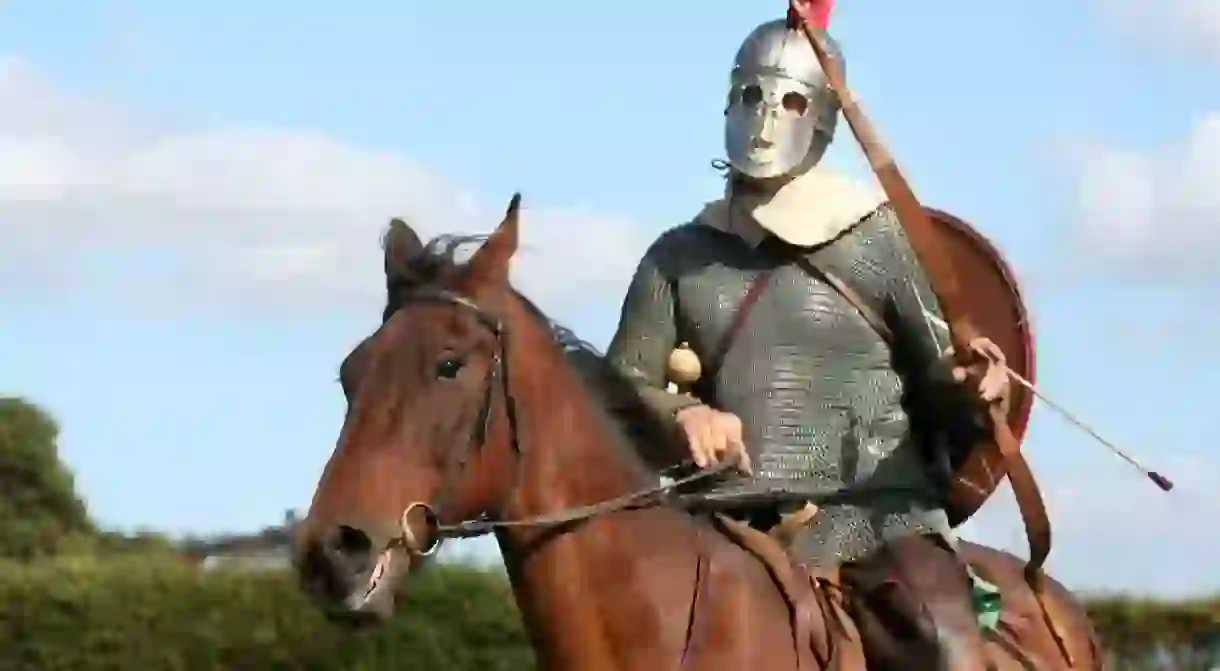How Mercenary Archers Served the Roman Empire

With their crimson tunics, metal armour and curved, rectangular shields, legionaries are probably the most famous soldiers of the Roman army. Though undoubtedly fearsome, they shouldn’t get all the glory: they were supported in battle by non-Roman citizens recruited from throughout the empire. Known as auxiliaries, these troops were often specialised fighters with a specific skill – such as archery.
Unlike legionaries, auxiliary soldiers were not Roman citizens. Auxiliaries served for pay – though only about a third of a legionary’s wage – and the promise of citizenship after 25 years of service. If they survived that long, they were also rewarded with a plot of land to farm in their retirement. Auxiliaries were often stationed away from their home provinces – to avoid revolts – in compact, easily manoeuvrable units.
Within the Auxilia, the archers, known as sagittarii, came from non-Roman societies with a tradition of archery in their military forces. From 200 BC onwards, most archers came from the island of Crete but, by the time the republic was replaced by the empire in 27 BC, Syria and other places in the Eastern Mediterranean were supplying the majority of archers.

The Roman archer’s weapon of choice was the composite bow, made from wood, bone and sinew. Thomas R. Martin, Professor in Classics at the College of the Holy Cross, told Culture Trip just how deadly this equipment could be.
‘It is estimated that a top-notch composite bow could propel an arrow from 200 to 300 metres (from 656 to 984 feet); of course, the closer the target, the greater the force with which the arrow struck. At a closer distance, a composite bow with an arrow with a relatively “slim” arrowhead could sometimes pierce metal armour. Arrowheads with tangs [notches] were also used, to make it difficult to extract them from flesh without doing more damage’.
Archers were employed alongside other specialised soldiers, including cavalry, who fought on horseback, and slingers, who hurled metal or stone projectiles at the enemy. While Roman infantry soldiers did carry missiles, such as spears or javelins, they mainly engaged in close combat, using tools like the gladius or spatha, both types of sword.
Professor Martin explains that the job of archers was to bolster artillery fire, killing and injuring the enemy if possible, but ‘above all, to panic enemy units into losing their cohesiveness and battle order’. A disorganised and panicked opponent would then be less able to withstand attack from the Roman infantry.

As the Romans fought ever-more skilled adversaries, they adapted their military strategies to match them. Following campaigns against armies that utilised mounted archers, such as Crassus’ defeat against the Parthians at the Battle of Carrhae, the Roman army also introduced horse-mounted archers.
Though archers were primarily non-Roman subjects, their skill and proficiency on the battlefield meant they did eventually command respect from Roman citizens and the elite. This theme of assimilating conquered nations into society was one of the key reasons the Roman Empire was able to expand throughout the Mediterranean and beyond.
Professor Martin sums it up: ‘it was fundamental to the success of ancient Rome in developing from a pitifully small and weak band of refugees to the most powerful state in the Mediterranean that, from the start, the Romans took in outsiders much, much more than did other ancient states’.













